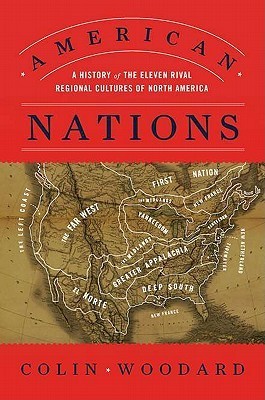American Nations Book Summary
A History of the Eleven Rival Regional Cultures of North America
TL;DR
Colin Woodard's "American Nations" uncovers the eleven distinct regional cultures of North America, challenging the conventional red state-blue state dichotomy and revealing how historical rivalries have shaped contemporary America.

Get full Book
What is American Nations about
"American Nations: A History of the Eleven Rival Regional Cultures of North America" is a groundbreaking work by Colin Woodard that delves into the unique cultural landscapes of North America. Woodard posits that the continent is comprised of eleven distinct nations, each with its own historical, political, and cultural identities. Rather than a singular American culture, these regions—ranging from New England to the Southwest—have evolved separately, shaped by their original settlers' backgrounds. This nuanced perspective provides insight into the political divisions and regional differences faced today, suggesting that America's identity is more complex than the red state-blue state dichotomy often portrayed in media.
American Nations 8 Key Takeaways
Distinct Regional Cultures
Woodard identifies eleven unique cultural regions in North America, each with its own historical and social characteristics that influence present-day values and political affiliations.
Impact of Immigration
Subsequent waves of immigration did not create a homogenous American culture; instead, newcomers integrated into existing regional identities, further complicating the cultural landscape.
Historical Rivalries
The book examines how historical rivalries between these regions have shaped key events in American history, including the American Revolution and the Civil War.
Political Divisions
Woodard argues that today's political divisions are deeply rooted in these cultural differences, revealing how intranational conflicts have persisted through time.
Cultural Continuity
The enduring nature of these regional cultures demonstrates that they continue to influence contemporary social and political issues, challenging the idea of a unified national identity.
Rethinking American Identity
The book invites readers to reconsider what it means to be 'American' by highlighting regional identities that often clash with national narratives.
Framework for Understanding Differences
Woodard's framework provides a lens for understanding the complexities of American society and the historical context for current events.
Geographical Boundaries
These cultural regions do not conform to state lines and are instead shaped by historical settlements and migrations, which helps explain varied regional attitudes.
Top American Nations Quotes
- "The United States is a nation of nations, and only by understanding that can we hope to solve the problems we face."
- "Cultural identities do not simply disappear; they evolve and shape the political landscapes of our lives."
Who should read American Nations?
This book is ideal for readers interested in American history, cultural studies, and political science. It offers valuable insights for those seeking to understand the deep-rooted divisions within American society and the historical context behind contemporary issues.
American Nations Best Reviews
- "A profound rethinking of American identity and history. Woodard's work is essential reading for anyone seeking to understand the fractured nature of North American culture." - The New York Times
- "Woodard's analysis is a compelling look into the tapestry of American life, a must-read for both historians and anyone interested in the roots of modern divisions in society." - The Washington Post
People also liked these summaries
American Nations FAQs
What are the eleven nations described in the book?
The eleven nations in Woodard's analysis include Yankeedom, New Netherland, the Midlands, the Tidewater, the Deep South, Greater Appalachia, the Far West, the Left Coast, the Spanish Borderlands, the First Nation, and the New England region.
How does Woodard's view differ from traditional narratives of American identity?
Woodard challenges the notion of a singular American identity by illustrating how regional cultures have developed independently, leading to significant cultural and political differences that shape modern America.
What relevance does this book have for understanding current political divisions?
By examining historical rivalries and cultural foundations, Woodard provides a context for understanding contemporary political divisions in the United States, suggesting that these conflicts are rooted in deep-seated regional identities.